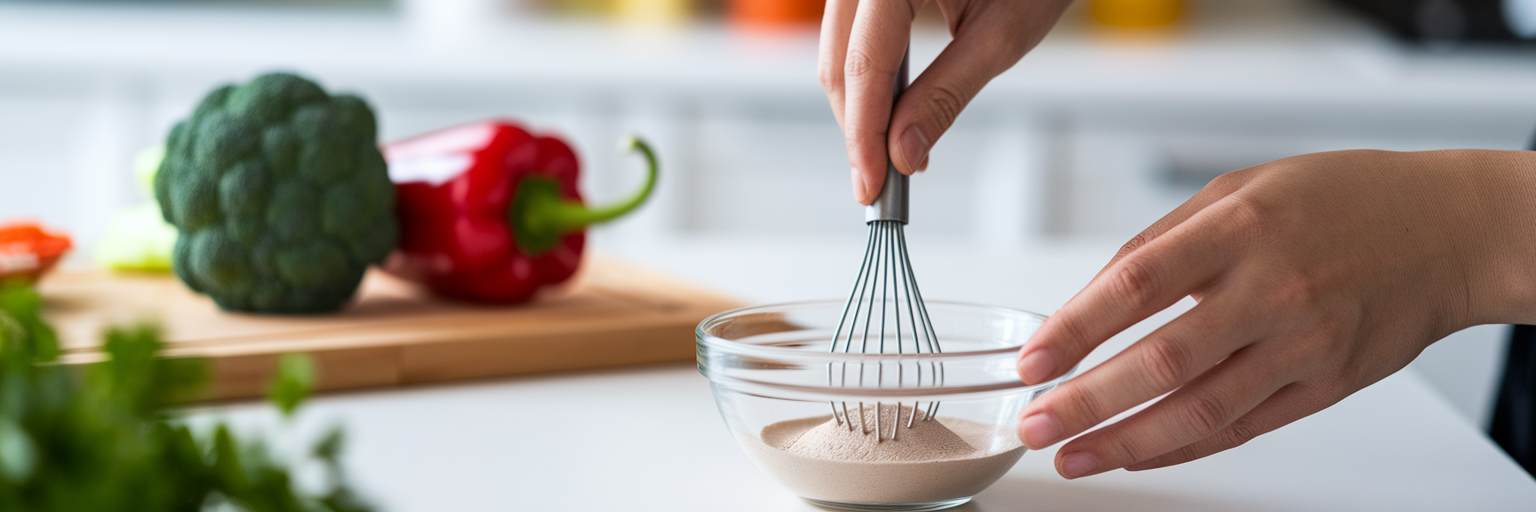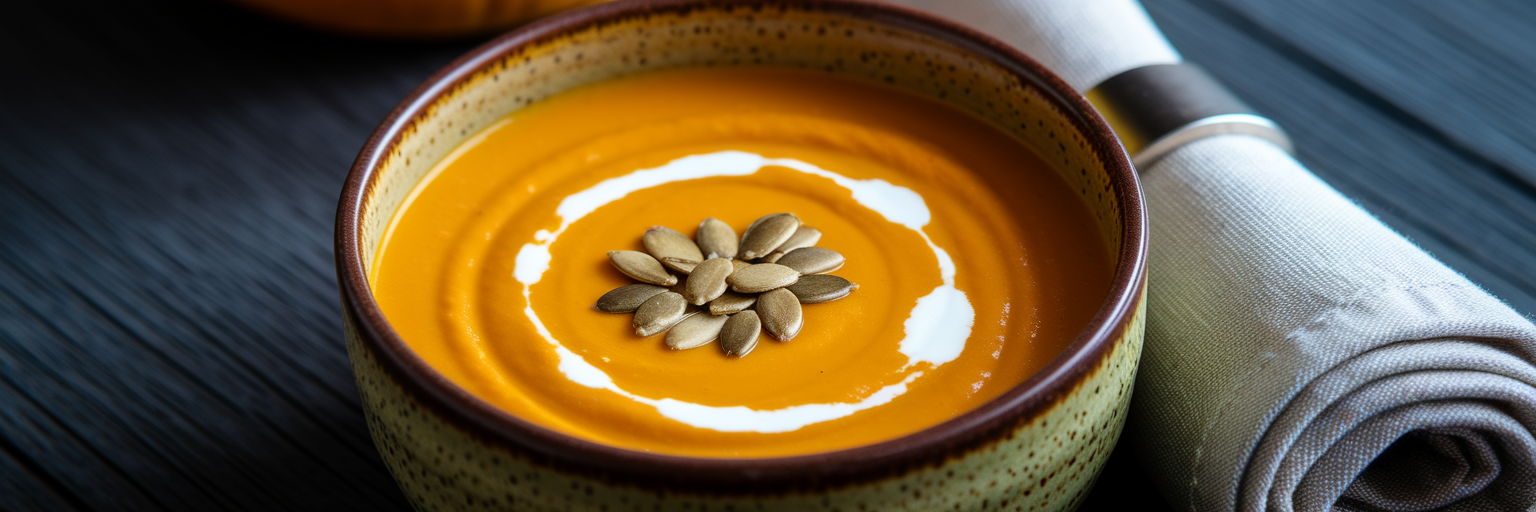Your Kitchen’s New Secret Ingredient
The plant-based protein market is a significant part of the American food scene, yet for many of us, protein powder still lives exclusively next to the blender for sweet morning shakes. We get it. But what if its best quality wasn't its flavor, but its lack of one? Unflavored vegan protein powder is a versatile pantry staple waiting to be discovered, and its neutral profile is its greatest strength.
Imagine boosting the protein in your favorite pasta sauce or soup without clashing with the garlic, herbs, or spices you so carefully balanced. That’s the power of a good unflavored powder. Common options in the US include pea, soy, and rice protein blends, which are often formulated to provide a complete amino acid profile. This makes them an incredibly simple tool for supporting muscle health and staying full longer, especially on a plant-based diet.
Thinking about protein powder as a cooking ingredient, rather than just a shake mix, opens up a world of nutritional possibilities. If you're curious about the differences between them, our guide to the best protein powders can help you choose the right one for your kitchen adventures.
Mastering the Basics of Cooking with Protein Powder

The idea of adding powder to a hot pan can be intimidating. We’ve all had that moment of hesitation, picturing a clumpy, chalky mess. But learning how to use protein powder in savory dishes is surprisingly simple once you know the ground rules. The most common mistake is adding it directly to a hot liquid or dish, which causes it to seize up.
The solution is the slurry method. Before you do anything else, mix your scoop of protein powder with a small amount of room-temperature liquid, like water or broth. Stir it into a smooth, thick paste, much like you would with cornstarch. This simple step ensures it will dissolve evenly into your meal without a single clump. From there, texture is the next consideration. Start small with just one scoop per serving. The goal is to supplement your meal, not replace its core ingredients, and this helps avoid an overly dense or dry result.
When it comes to savory baking, like in muffins or breads, a good rule of thumb is to substitute no more than one-fourth of the flour with protein powder. You may also need to slightly increase the wet ingredients to maintain moisture. Since every powder has a unique personality, from earthy hemp to neutral pea, it’s always wise to do a small test batch first. If you run into any other questions while experimenting with cooking with protein powder, you can find more answers in our FAQs.
| Protein Type | Taste Profile | Best Savory Use | Pro Tip |
|---|---|---|---|
| Pea Protein | Very neutral, slightly creamy | Soups, sauces, creamy dips | Dissolves well and adds a nice thickness to liquids. |
| Soy Protein Isolate | Neutral, almost flavorless | Baked goods, stews, chilis | Has great binding properties, making it good for savory muffins. |
| Brown Rice Protein | Slightly grainy, mildly sweet | Hearty stews, veggie burgers | Best when combined with another protein like pea to create a complete amino acid profile. |
| Hemp Protein | Earthy, nutty flavor | Pesto, earthy soups, seed crackers | The distinct flavor works well in recipes where a nutty taste is a bonus. |
Note: This table offers general guidance. The texture and taste can vary slightly between brands, so it's always a good idea to experiment with a small amount first.
Effortless Upgrades for Dips and Sauces
Ready for some easy wins? Building your confidence with savory vegan protein recipes starts with simple, no-cook or low-cook applications. These small upgrades can make a big nutritional difference in meals you already love, turning a simple snack into a more satisfying and balanced part of your day.
- Boost Your Dips: Stir a scoop of neutral-tasting pea or soy protein into store-bought or homemade hummus, black bean dip, or a creamy cashew dip. It adds an instant protein lift without anyone noticing.
- Enrich Your Sauces: After making your protein slurry, whisk it into a marinara or tomato sauce during the final few minutes of simmering. It will add body and nutrition without altering that classic Italian flavor.
- Fortify Dressings and Pesto: Blend a scoop of powder directly into a homemade creamy tahini dressing or a fresh basil pesto. This makes salads and grain bowls significantly more filling and satisfying.
- Create a Savory Yogurt Bowl: Here’s a unique idea for a quick lunch. Mix a half-scoop of protein powder into plain, unsweetened plant-based yogurt. Top it with a sprinkle of everything bagel seasoning, some fresh scallions, and a few cherry tomatoes for a surprisingly delicious and protein-packed meal.
These simple hacks show just how easy it is to incorporate more protein into your diet. For more inspiration, check out these three easy vegan protein recipes you'll actually crave.
Creating Hearty, High-Protein Soups and Stews

Moving beyond dips and sauces, let's talk about creating truly high protein savory meals. Soups and stews are perfect candidates for a protein boost, but the technique for hot liquids is important. To protect the powder's texture and nutritional profile, you should always add it at the very end of the cooking process.
The method is a slight variation of what we've already learned. Once your soup is cooked, ladle about a cup of the warm, not boiling, broth into a separate bowl. Whisk your protein powder into this bowl until it's completely smooth, then stir the mixture back into the main pot. This ensures it incorporates seamlessly.
Creamy, puréed soups are especially well-suited for this. Think of a velvety butternut squash, roasted red pepper, or classic tomato soup. The powder naturally enhances their thick consistency while adding a substantial protein punch. For chunky stews and chilis, the powder not only adds nutrition but also acts as a fantastic thickener for the base. One of our favorite tricks is adding pea protein to a split pea soup—it amplifies the natural flavor and protein content beautifully.
Building a Nutritionally Balanced Savory Meal
While protein powder is an excellent tool, it’s just one part of the equation. True wellness comes from overall balance, not just hitting a protein target. A simple way to visualize this is with the plate method, a popular guide in the US for building a balanced meal. Aim to fill half your plate with non-starchy vegetables like broccoli, spinach, or bell peppers.
Dedicate one-quarter of your plate to complex carbohydrates such as quinoa, brown rice, or sweet potatoes. The final quarter can be your protein-boosted dish, whether it’s a lentil stew enriched with powder or a pasta with a fortified tomato sauce. This approach makes balanced eating feel intuitive and achievable.
Don’t forget to include healthy fats like avocado, nuts, seeds, or a drizzle of olive oil. Fats are essential for helping your body absorb certain nutrients and contribute to feeling full and satisfied. Remember, the goal is progress, not perfection. Focus on creating overall balance throughout your day and week, and enjoy the process of nourishing your body well.
Ready to Start Cooking?
See? It’s not so complicated after all. Unflavored vegan protein is an incredibly versatile kitchen tool that can help you meet your nutritional goals without another sweet shake. Just remember to always make a slurry first, start with easy recipes like soups and sauces, and don't be afraid to experiment. These unflavored vegan protein powder ideas are just the beginning.
Try one of these tips and share your savory creations with us on social media! We’d love to see what you come up with.
Ready to find your perfect match? Explore our collection of clean, plant-based protein powders to get started.



